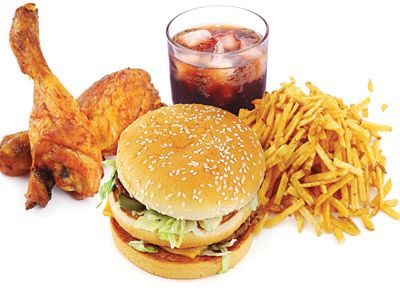Snacks and Beverage Consumption pattern of Adolescents and Young Adults
A case study of selected undergraduate students in a Nigerian private University
Abstract
Dietary habits which influence health are generally developed over a period of time. The high rates of snacking and the consumption pattern of snacks and beverages in adolescence and young adulthood have been associated with the risk of malnutrition. This study was designed to assess the consumption pattern of snacks and beverages of undergraduate students at Bowen University, Iwo Osun State, Nigeria.
Selected (170 females and 146 males) undergraduate students participated in a descriptive cross-sectional study using a structured self-administered questionnaire to obtain information on the socio-demographic characteristics, lifestyle practices, dietary habits, and factors influencing choice of snacks and beverages. A snack and beverage consumption frequency questionnaire was used to collect data. Body mass indices were obtained and descriptive and inferential statistical analysis at p<0.05 was carried out.
Results showed that 53.2% of the respondents spent between ₦100-₦300 ($0.3 - $1) on snacks and beverages daily, 7.9% spend less while the remaining 38.9% spend more than N300 ($1) on snacks and beverages daily. Drink and snack options that were high in calories such as sugary carbonated drinks, cookies, cakes and pastries were consumed more sometimes than fruits and fruit juice. Preference, availability, quality, distance from hall of residence and price were major factors influencing the choices of snacks and beverages. Very few respondents consumed fruits (16.1%) and vegetables (10.1%) daily. About half of the respondents (46.5%) did not engage in any form of physical exercise except from school and domestic activities. Most of the adolescent respondents (94.9%) and 67.3% of the young adult respondents were of normal body weight. However, 2.5% of the young adult respondents were underweight while 25.2% were overweight and 5.0% were obese.
There was no significant difference between snack and beverage consumption frequency of male and female respondents, and there was no association between the body mass index of respondents and their snack and beverage consumption frequency except for biscuits and pastries, frequency of consumption of which was associated with higher BMI. Further studies could be done to explore the lack of association for other snacks and beverages.

Authors retain all copyrights. In making a submission to World Nutrition, they are certifying that all material is theirs except quotations, as indicated, and that they have obtained permission for any photos, tables, or graphics taken from other publications or websites.




